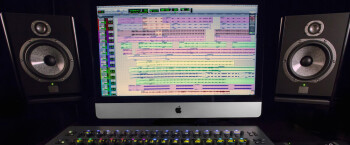Dear friends, I know the closer we come to the end the more impatient you get. What do we have left after the delicate automation phase? Well, quite a few things and not particularly easy ones. In the coming weeks we'll look at different methods of listening that ought to help you judge better your mixes. This will help you give the finishing touches to your wok before you can send it to the mastering studio. So hold on, we're almost there!
Preface
To begin with, I invite you to take a pause. Seriously. You’ve probably been working for hours on the song your mixing (or even months if you evolve at the same pace as this series) and the first thing you’ll need to check the quality of your work is a fresh ear. Even the most talented engineers take at least 15 minutes off before the critical listening session where they will give the green light to their mix. And since you most probably don’t have as much mileage as they do, I recommend you to take at least a night off. Yet I know perfectly well that most of you won’t do it. It’s in our human nature to think that, as nice and reasonable as it sounds, “I don’t really need it.” But trust me when I say that it’s in the best interest of your music. So take hold of yourself and take a pause.
Now it’s important to remark that none of the listening techniques that we are about to see is mandatory. What’s more, if you decide to apply all of them, you won’t be able to leave your apartment for a long while. The idea here is to showcase different methods so that you can find the combination that works best for you. With that in mind, I recommend you to try all of them at least once so you can choose better the one you want to use.
Finally, chances are you will feel a strong urge to fiddle with your mix when listening to it. But you should stay put! There’s a time for everything! Knowing what you are doing when you are doing it is the best way to get optimal results. You are entering an analytical phase. Interfering with it by moving a single fader will not only affect your judgment but could also have catastrophic results on the entire mix. If you detect an issue during the listening session, take note of the part in question without interrupting the playback and concentrate again on the critical listening as fast as possible. We will come to the retouching of the details, don’t worry about that.
By the way, in case you’re interested, I use a trick to optimize my workflow when going form the critical listening to the retouching of the eventual details I have spotted. I always have a notebook on my lap and a finger on the marker shortcut of my DAW. This way I can insert a marker on the fly whenever I hear something that disturbs me without interrupting the playback and write down a brief commentary on the notebook to know why I placed the marker. This allows me to pinpoint exactly where I have to go back to double-check things during the retouching phase.
And that’s it for today. In the next installment we’ll discuss the things you need to consider for the critical listening session of your mix.



